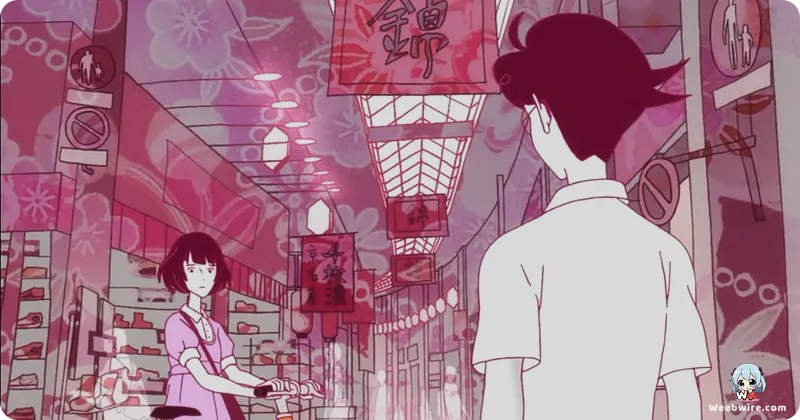Inside 'The Tatami Galaxy': Unpacking the Genius of Masaaki Yuasa's Award-Winning Anime

Masaaki Yuasa's 2010 masterpiece, The Tatami Galaxy, stands as a pivotal anime that transcends mere entertainment, solidifying its place as a profound artistic statement. Celebrated for its mind-bending narrative, lightning-fast dialogue, and utterly unique visual style, the series is a treasure trove of deliberate creative choices and fascinating insights that underscore its enduring brilliance as a cult classic.
A Unique Visual Language
One of The Tatami Galaxy's most striking features is its distinctive animation, a signature of director Masaaki Yuasa. Unlike the prevalent polished designs often seen in anime, Yuasa employs a deliberately rougher, more abstract aesthetic, featuring exaggerated characters and fluid, almost rubbery movements. This visual approach, coupled with integrated live-action footage, photographs, and cut-out animation, creates a mixed-media kaleidoscope. This eclectic style brilliantly externalizes the protagonist's chaotic internal monologue and disoriented journey through countless parallel university lives, mirroring the story's complex psychological landscape.
The Torrent of Thought: Dialogue at Breakneck Speed
Equally iconic is the blistering pace of dialogue, with the unnamed protagonist, voiced by Shintaro Asanuma, narrating his experiences at superhuman speed. This torrent of words isn't just a quirk; it's a powerful narrative device reflecting his anxious, overthinking mind and his tendency to rush through life. While challenging, this speed draws viewers deeply into his frantic headspace, making his eventual realization of appreciating the present all the more impactful. Asanuma's performance in this role is a monumental feat of breath control and articulation.

A Symbiotic Artistic Partnership
At its core, The Tatami Galaxy is a masterful adaptation of Tomihiko Morimi's novel, known for blending magical realism with everyday Kyoto university life. Yuasa's recurring collaborations with Morimi, which include acclaimed works like The Eccentric Family and Night Is Short, Walk on Girl, highlight their shared artistic sensibility. Yuasa's dynamic visual storytelling perfectly complements Morimi's imaginative prose, creating a truly unique synergy.
Subtle Depths: Namelessness and the 4.5-Tatami Room
A subtle yet profound narrative choice is the protagonist's namelessness. This allows for universal relatability as he grapples with the common anxieties and search for purpose that define youth. This omission also emphasizes his transient existence within looping realities. Furthermore, the recurring "4.5-tatami room" is a powerful metaphor for his self-imposed limitations and narrow worldview, representing a psychological prison from which he strives to escape.
Legacy and Resolution: Embracing the Present
The Tatami Galaxy garnered significant critical acclaim, winning the Grand Prize at the 14th Japan Media Arts Festival in 2010. This prestigious award cemented its innovative storytelling and Masaaki Yuasa's reputation, paving the way for more experimental anime. The series concludes with a masterclass in narrative resolution: the protagonist, initially trapped within his expanding 4.5-tatami room, confronts his inaction. He ultimately realizes that true happiness lies not in an idealized "rose-colored campus life," but in embracing present choices and accepting imperfections. It's a powerful message of self-acceptance and finding beauty in the 'ordinary,' making it an unforgettable journey of self-discovery for viewers.
Credits
The Tatami Galaxy
Author
Tomihiko Morimi
Cover Art
Yuusuke Nakamura
Studio
MADHOUSE
Publisher
Ohta Publishing
Producers





